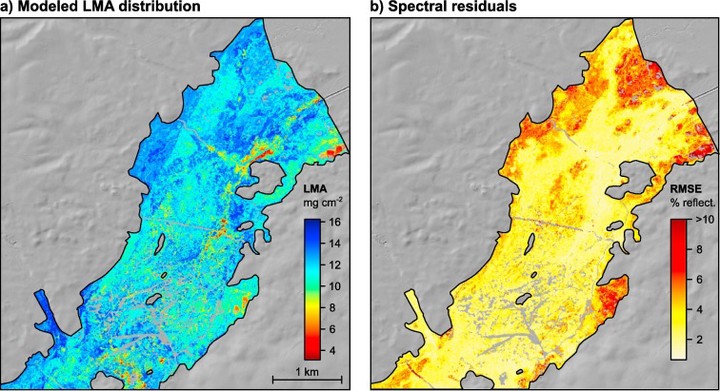Are Remotely Sensed Traits Suitable for Ecological Analysis? A Case Study of Long-Term Drought Effects on Leaf Mass per Area of Wetland Vegetation

Abstract
Plant and community traits provide valuable insights in ecosystem functioning. Yet, such traits are costly to sample. Existing trait data bases give access to species-specific traits and help to reduce the sampling effort and costs. However, many traits show a high intra-specific plasticity due to the variability of environmental conditions, which is not fully accounted for in the data bases. As an alternative approach, remote sensing is able to retrieve some traits from the spectral reflectance signal of the canopy. Here we test whether remotely sensed traits provide the level of detail to trace the trait plasticity in response to changing environmental conditions. For this proof of concept study, we selected the example of leaf mass per area (LMA), a key trait for ecosystem functioning and good negative correlate of potential growth rate, in our study site Las Tablas de Daimiel National Park (Spain). This wetland was affected by a long-term drought, which introduced a pronounced trait plasticity as part of the adaptation mechanisms of the vegetation to reduced water availability as well as a decrease in photosynthetic activity. Imaging spectroscopy (HyMap) data of the wetland at peak drought intensity were acquired in 2009 simultaneous to a field campaign. We applied an inversion of the PROSAIL radiative transfer model on these data to map the LMA distribution across the wetland. Further, we quantified trends in photosynthetic activity and changing species composition across the wetland by analyzing time series of the normalized difference vegetation index (NDVI) as calculated for multispectral remote sensing data. The retrieved LMA values were analyzed within and between stands of different species and communities along a gradient of changing photosynthetic activity and species composition. Results show that LMA values retrieved for stands of species with high photosynthetic activity at peak drought intensity closely meet the values reported in data bases. The observed intra-specific LMA variability is in line with the expected plasticity of this trait along a moisture gradient that is reflected in a change in photosynthetic activity and species composition. We thus conclude that LMA values retrieved from’’ imaging spectroscopy data provide sufficient detail to trace the response of wetland vegetation to long-term drought stress.